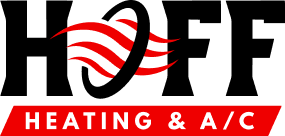Ways to Measure Indoor Air Pollution

Indoor air pollution is a severe problem that can significantly impact your health. Poor ventilation, inadequate filtration, and emissions from building materials, furnishings, cleaning products, and other sources can all contribute to the issue. Measuring indoor air quality (IAQ) can be helpful for identifying any problems with the air quality in your home. Once you are aware there is a problem, you can then take steps to reduce pollutants in your house. Fortunately, several methods are available to measure indoor air pollution.
Get an Air Quality Monitor
An air quality monitor is a device that measures the air quality and pollutants present in a closed area, including the levels of particulate matter and other harmful substances. You can use these devices to test different parts of your living space and detect high levels of pollutants.
Wall-mounted air quality monitors can be placed in the common areas throughout your home. Some smart thermostats even come with IAQ sensors built in, while many air quality monitors, in addition to pollutants, measure humidity levels and temperature to give you a fuller picture of your IAQ. These monitors and thermostats should not be mounted in direct sunlight or above vents for the most accurate results.
A benefit of these monitors and thermostats with air quality testing functionality is that you can survey the level of pollutants in the air you breathe over time. Many of these devices have apps that can organize all this information on your smartphone, tablet, or computer.
After you have the results, you can compare them to Environmental Protection Agency (EPA) standards to determine if you have a poor indoor air quality issue. EPA standards exist for acceptable levels of specific pollutants in your home, such as particulate matter, carbon monoxide, and volatile organic compounds. With this information, you can decide if there are minor changes that you can make to improve your IAQ or if you have a larger problem. If you determine that you have a serious air quality issue, it is probably time to call a reputable HVAC company to perform more in-depth testing and suggest solutions for your home.
Keep Track of Your Health
Tracking your health can help you recognize any adverse changes in the indoor air quality of your home. You should pay attention to any changes in your breathing, sleeping patterns, or overall feelings of well-being. You can also pay attention to when you are feeling symptoms of poor indoor air quality, such as dry eyes, a scratchy throat, or coughing. If you notice that you mostly experience these symptoms while spending time at home, it will let you know that the issue is the air quality where you live rather than problems with the air quality elsewhere, like your place of work.
Professional Indoor Air Quality Assessment
If you have become aware that you are experiencing symptoms of poor indoor quality while at home or have used air monitors to determine that you have an IAQ problem in your house a HVAC professional can help. They will begin helping you solve the problem by conducting in-depth air quality tests that may not be commonly available to homeowners. They also have the training and experience to interpret the results and offer effective solutions to any indoor air quality issues they identify. Some of the methods they use are outlined below.
Air Samplers
An air sampler is a device that collects particles from the air to get analyzed in a laboratory. These samplers can help measure various pollutants, including particulate matter, bacteria, and mold spores. Particulate matter (PM) is a complex mixture of solid and liquid particles suspended in the air. These particles are comprised of things like pet dander and pollen.
Air samplers also allow a professional to test for volatile organic compounds. VOCs are organic compounds that can be released into the indoor environment through painting, cooking, and household cleaning products. Common VOCs include formaldehyde, benzene, and trichloroethylene. Inhaling VOCs or PMs over a long period can lead to irritation of the eyes, nose, and throat, as well as respiratory problems and certain types of cancers.
HVAC technicians use air samplers because they are a valuable tool for measuring pollutant concentrations to assess potential health risks. This method is also beneficial because it doesn’t require interruption of activities. A professional will place these devices around your home and take periodic samples over a specific timeframe. This provides valuable data that can help identify sources of air pollution and determine what steps will reduce it.
Test for Radon Levels
Radon is a naturally occurring radioactive gas that can enter your home through cracks in the foundation or walls. Radon gas is poisonous when inhaled over long periods and can cause serious health problems, including headaches, dizziness, nausea, and fatigue. In addition, radon exposure has been linked to more serious long-term health conditions like lung cancer.
A professional radon test is usually conducted over a period of time, typically 48 hours. The HVAC technician will strategically place radon detection devices in your home based on your house’s layout. Their knowledge and experience allow them to choose placements that will give the best results and reduce false readings. After the test period, the technician will collect the devices, and you will get a detailed report based on the measurements taken by the radon detectors.
Check for Mold Growth
Mold growth is a significant contributor to indoor air pollution. While mold may seem like an aesthetic issue, it can be dangerous to your health if left unchecked. Mold spores are microscopic, easily inhaled, and can cause allergic reactions and respiratory irritation. Additionally, some mold emits toxins into the air that could adversely affect your health over time.
Because a professional knows mold spores can adversely affect your family’s health, they will check for mold growth in areas where homeowners may not have. A technician will inspect any dark, damp areas of your home, including your basements or attic. They may also use a camera to examine your ductwork thoroughly.
Tips to Improve Indoor Air Quality
There are a variety of steps you can take to improve the air quality inside your home. Implementing these changes can reduce air pollutants and create a healthier environment for all occupants.
- Use VOC free cleaning products
- Use a vacuum with a HEPA filter while cleaning
- Use vents to remove cooking fumes
- Enure filters in your HVAC system are changed regularly
- Smoke outside the home
- Clean regularly and keep air vents unblocked
- Incorporate air-purifying plants into your living space
In addition, professionals can advise you on how to ventilate your home correctly and recommend specific air purifiers or other products to improve the quality of the air you breathe while in your house.
Contact the Professionals
At Hoff Heating & AC, we have been serving the residents of O’Fallon, MO since 1983. We install, maintain, and repair heating and cooling systems. Our professionals also provide indoor air quality services and are experts in air purification, filtration, and ventilation. Contact Hoff Heating & AC today if you are concerned about the air quality in your home.

 Call Us Today
Call Us Today
